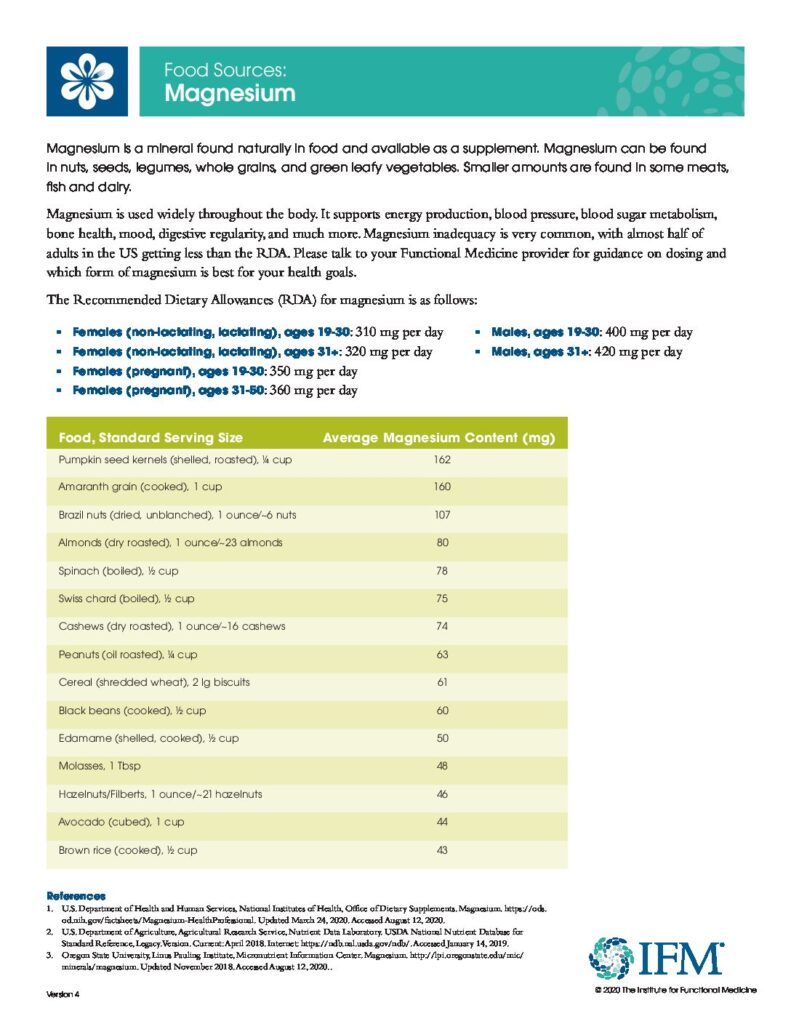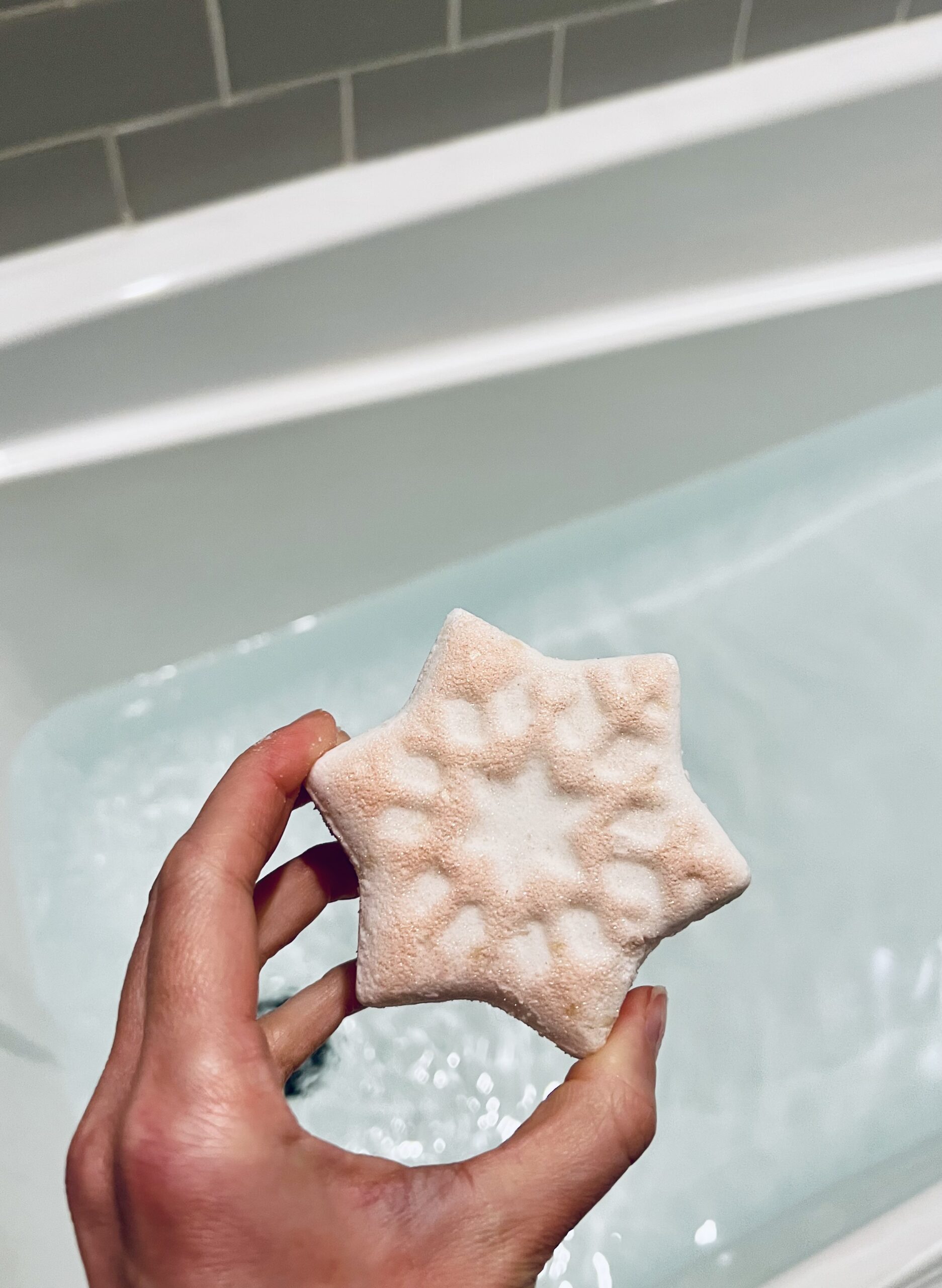When I decided to start this blog, I knew one of the first things I wanted to write about was magnesium! There are three main reasons for that: it is vital for many bodily functions, the majority of people are deficient in it and it is fairly easy to treat!
I like to think of magnesium as “the relaxation mineral.” Years ago, when I was working as a nurse on a labor and delivery unit, we used to treat women in pre-term labor with IV magnesium sulfate. When you are having contractions, the uterine muscle is cramping/tightening, so giving magnesium sulfate helps to relax that muscle.
So when you think of the symptoms of magnesium deficiency, think of things that are the opposite of relaxation, such as:
-muscle cramps & twitching
-headaches
-high blood pressure
-asthma
-anxiety
-heart palpitations
-irritable bowel syndrome
-menstrual cramping
-chest pain
-insomnia
-muscle stiffness
-constipation
If you are experiencing any of these symptoms, you may want to consider the possibility that you could be low in magnesium! One of the reasons so many people are deficient is because the standard American diet does not tend to include many of the foods that are rich in magnesium. See the graphic below for some various foods you may benefit from incorporating into your diet and the dosage of magnesium you should be aiming for daily.

It can be difficult to reach the recommended daily amount (around 300mg for women and 400mg for men) through food, so many people will choose to supplement. One thing that can be confusing about magnesium is that they are so many different forms! Let me try to break it down a little bit to hopefully help make it easier to decide what one might be best for you:
1. The most absorbable forms of magnesium are citrate, glycinate, malate, l-threonate, chelate, taurate, chloride and carbonate
2. Magnesium oxide is very commonly seen in supplements, but not well absorbed
3. Magnesium citrate has a laxative effect, making it a good choice for those who struggle with constipation and one to avoid for those who tend to have loose stools.
4. Magnesium l-threonate may enhance memory and cognitive function
5. Magnesium taurate is a good option for those who have high blood pressure or other heart related concerns
Last year, one of my husband’s thumbs was really twitching and driving him crazy! Our functional medicine doctor said he might be deficient in magnesium. He started taking magnesium malate, and much to his surprise, it really helped! We have since switched to tri-magnesium since it is a higher dosage and he wanted to cut down on the number of pills he was taking. Now he’s definitely a believer that supplementing with magnesium can make a difference!
There is also something called magnesium oil that you use topically on your skin. It is available in spray, lotion or gel. is pretty straightforward, you just apply it to clean skin and rub it in! It’s normal to feel a tingling or burning sensation with initial use, but that should subside. If you choose to go this route, start slow and work your way up. You may notice a white residue left on your skin after use. It is just the salt that has stayed behind and can be wiped off after 20 minutes, if desired!
My personal favorite way to supplement magnesium is by soaking in an epsom salt bath!! Magnesium sulfate and magnesium chloride are the two forms most commonly seen in epsom salts. Dissolving 2 cups of these salts in warm water and soaking for 20 minutes. I definitely recommend drinking some water while you are in the tub and rinsing off your body afterwards. Although I put my phone on silent, I like to bring it in the bathroom with me while I am taking a bath to listen to my Christian meditation app or audiobook. I have also found this to be a great time to do some deep breathing & to pray!

Taking an epsom salt bath is such a great and easy way to get many health benefits at once…soothe sore muscles, reduce stress, detoxify, promote good sleep and soften skin. And boy is all of that nice, especially on a cold winter night! I’m a huge sucker for cute, high quality bath bombs, too! I’ll link those and all of my recommendations for magnesium boosting products below for you to check out! Like most things, there are big differences in the quality of magnesium products and supplements.
We were briefly in Hot Springs, Arkansas this past weekend… which is a very quaint town where Arkansas’ very own national park is located! While there, we learned a little bit about the history of the natural mineral springs (which contain magnesium and other minerals from the earth). For hundreds of years, people have traveled from all over to come bathe in the thermal springs because they’ve believed in the therapeutic and healing benefits of doing so. Bathhouses were built over some of the springs and Hot Springs became a major resort town. A couple of the original bathhouses are still operational today, offering thermal mineral baths. I really hope I get to enjoy one the next time we are there! It is a neat town with a ton of history, and not just about mineral baths, but also gangsters, baseball, national parks, etc.! I would definitely recommend spending some time there if you are ever in the area.

Now I really want to take a nice, long, magnesium rich bath! In fact, I think I’ll go draw one up right now. Good night, friends!

Although I am a nurse by trade, I am not a doctor or an expert, and the information I provide on this blog is for educational purposes only. Each person is unique and their needs and circumstances vary, so I always recommend that you consult your medical provider before making any changes.



Thank you for taking time to educate all of us on our bodies, minds and souls.
You are gifted. ❤️
You’re so welcome! I pray it helps!
After a trip to the doctors office this weekend I found out I was low on Magnesium and Potassium. Your blog offered some excellent advise on where to find some great sources for Magnesium. Thank you for sharing your knowledge! You are gifted indeed! <3